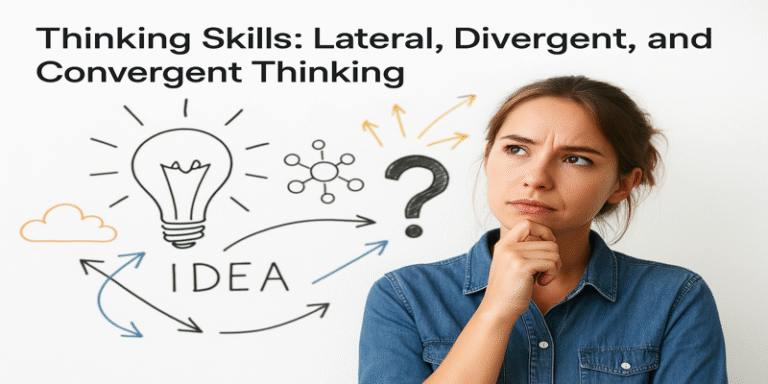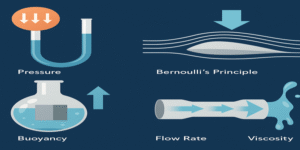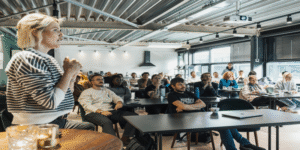In the modern world of innovation, education, and problem-solving, understanding different thinking skills is essential for personal, academic, and professional success. Among these, lateral, divergent, and convergent thinking represent distinct yet complementary cognitive processes that underpin creativity, critical reasoning, and effective decision-making. While they share the common goal of generating and refining ideas, they differ in the pathways and mental operations used to reach a solution.
1.0 Lateral Thinking
Lateral thinking, a concept introduced by Edward de Bono (1970), refers to an indirect, non-linear approach to problem-solving. Rather than progressing through a step-by-step logical sequence, lateral thinking seeks to restructure patterns of thought and explore unconventional solutions. De Bono argued that traditional “vertical thinking” relies on analytical reasoning, while lateral thinking breaks habitual patterns to allow for creative insight and innovation.
Lateral thinking is grounded in the idea that creativity is not a mysterious or innate talent but a skill that can be cultivated through deliberate techniques (De Bono, 1970). Techniques such as random stimulus, provocation (PO), and concept extraction are commonly used to encourage the brain to make new associations. For example, a team designing an eco-friendly transport system might use a random image or phrase to inspire connections between unrelated ideas, leading to the creation of innovative hybrid mobility solutions (Malthouse et al., 2022).
Research by Rawlings, Chetwynd-Talbot and Husband (2025) emphasises that lateral thinking enhances cognitive flexibility, enabling individuals to shift perspectives and overcome cognitive rigidity. In organisational settings, this type of thinking fosters adaptive problem-solving and innovation. For instance, companies such as Google and IDEO incorporate lateral thinking workshops to stimulate breakthrough ideas and challenge existing assumptions.
Lateral thinking is particularly useful when traditional analytical approaches fail to yield solutions. Gonzales (2001) highlights that problem-solving methods like Synectics—which encourages the combination of seemingly unrelated concepts—are rooted in lateral thinking principles. These approaches promote creative breakthroughs by reframing problems from novel angles, thereby expanding the scope of possible solutions.
2.0 Divergent Thinking
Divergent thinking refers to the generation of multiple ideas or solutions to a given problem, emphasising fluency, flexibility, originality, and elaboration (Guilford, 1950). It is a core component of creativity, as it involves exploring many possible directions before narrowing down to a final solution. Divergent thinking allows individuals to produce novel and diverse ideas, often through free association, mind mapping, or creative brainstorming sessions (Runco, 2020).
Psychologist J.P. Guilford’s (1950) work on the Structure of Intellect model introduced divergent thinking as a measure of creative potential. He proposed that creative performance depends on the ability to think broadly and fluidly rather than converge on one right answer. Later, Runco and Acar (2019) expanded on this, suggesting that divergent thinking represents a “gateway to creativity” by enabling cognitive exploration beyond traditional boundaries.
Neuroscientific studies, such as Razoumnikova (2000), provide evidence that divergent thinking engages both hemispheres of the brain, particularly the prefrontal and parietal regions associated with associative thinking and imagination. This dual activation suggests that divergent thinking draws upon both structured reasoning and imaginative synthesis.
In educational settings, divergent thinking is encouraged through open-ended learning activities and creative tasks that promote curiosity and flexibility. For instance, Acar and Runco (2015) found that when students were asked to find multiple uses for an ordinary object—a classic divergent thinking task—their creative fluency and originality improved significantly.
In business and design, divergent thinking plays a crucial role in innovation processes. In design thinking models, teams use divergent stages (e.g., brainstorming) to generate a wide range of ideas before employing convergent thinking to refine them (Goldschmidt, 2016). Such iterative cycles enable companies to innovate effectively while maintaining focus and feasibility.
3.0 Convergent Thinking
While divergent thinking expands possibilities, convergent thinking works to narrow them down, identifying the most effective or practical solution. It involves logical reasoning, critical evaluation, and analytical judgment (Guilford, 1950). Convergent thinking is used when problems have a specific correct answer or when solutions must be evaluated against predefined criteria.
According to Todd (2016), convergent thinking relies on structured problem-solving frameworks such as deductive reasoning or decision matrices, where various options are systematically assessed for validity. It is particularly important in scientific, engineering, and managerial contexts, where accuracy and efficiency are prioritised.
Recent cognitive research by Acar and Runco (2019) and Hommel (2012) suggests that convergent thinking is not merely the opposite of creativity but an integral part of the creative process itself. Creative ideas produced during divergent thinking must be evaluated, selected, and refined through convergent reasoning to become practical innovations. This interplay ensures that creativity leads to actionable outcomes rather than abstract possibilities.
For example, in the engineering design process, divergent thinking may be used to brainstorm numerous prototype ideas, while convergent thinking helps select the design that best meets performance and sustainability criteria (Hassan, 2018). Similarly, in healthcare innovation, convergent thinking helps refine patient care models derived from multiple creative proposals to ensure feasibility and safety.
4.0 Interrelationships Between Lateral, Divergent, and Convergent Thinking
Although lateral, divergent, and convergent thinking differ in process and focus, they are interdependent components of effective problem-solving and creativity. De Bono (1970) argued that lateral thinking provides the “jump-start” that moves individuals beyond linear reasoning, while divergent thinking generates a spectrum of possibilities, and convergent thinking filters and applies these ideas systematically.
In practice, these processes often occur simultaneously or sequentially rather than in isolation. Goldschmidt (2016) used linkographic analysis to demonstrate how designers alternate between divergent idea generation and convergent evaluation in creative tasks. Similarly, Javaid and Pandarakalam (2021) found that creativity involves a dynamic balance between the two modes—divergent expansion and convergent synthesis.
Malthouse et al. (2022) further argue that exposure to randomness or ambiguity—often central to lateral thinking—can stimulate both divergent idea generation and convergent insight. This finding reinforces the view that innovation requires both exploration and refinement, facilitated by fluid transitions between these cognitive modes.
Educational models such as the Creative Problem-Solving (CPS) framework integrate all three types of thinking. The CPS process involves divergent thinking to generate ideas, lateral thinking to challenge assumptions and introduce novel stimuli, and convergent thinking to evaluate and implement feasible solutions (Kooraeim, Bayrami & Nazari, 2012). Such integration supports holistic cognitive development, combining imagination with critical analysis.
5.0 Applications in Modern Contexts
In contemporary workplaces, fostering all three thinking modes is essential for innovation and adaptability. For instance, Apple’s product development combines lateral insight (rethinking the relationship between users and technology), divergent brainstorming (exploring new design possibilities), and convergent refinement (selecting and perfecting viable models).
In education, differentiated instruction based on lateral thinking techniques has been shown to enhance mathematical creativity and problem-solving (Shodiq, 2024). Encouraging students to oscillate between divergent idea generation and convergent validation cultivates both creativity and critical thinking.
Similarly, in architecture and engineering, integrating lateral and divergent thinking allows designers to conceptualise innovative solutions, while convergent thinking ensures technical feasibility and structural integrity (Hassan, 2018).
In conclusion, lateral, divergent, and convergent thinking are fundamental cognitive tools that enable individuals and organisations to innovate, adapt, and problem-solve effectively. Lateral thinking disrupts conventional patterns, introducing new perspectives; divergent thinking expands the range of potential ideas; and convergent thinking focuses, analyses, and selects the best options. Rather than existing in isolation, these processes operate as complementary stages of creative cognition, each contributing uniquely to the innovation cycle.
By cultivating all three types of thinking, individuals become more versatile, reflective, and inventive thinkers, equipped to address the multifaceted challenges of the modern world.
References
Acar, S. & Runco, M.A. (2015) Thinking in multiple directions: Hyperspace categories in divergent thinking. Psychology of Aesthetics, Creativity, and the Arts, 9(1), pp.41–56.
Acar, S. & Runco, M.A. (2019) Divergent thinking: New methods, recent research, and extended theory. Psychology of Aesthetics, Creativity, and the Arts, 13(2), pp.153–166.
De Bono, E. (1970) Lateral Thinking: Creativity Step by Step. Harper & Row.
Goldschmidt, G. (2016) Linkographic evidence for concurrent divergent and convergent thinking in creative design. Creativity Research Journal, 28(1), pp.35–45.
Gonzales, D. (2001) The Art of Solving Problems: Comparing CPS, Synectics and Lateral Thinking. Buffalo State University.
Guilford, J.P. (1950) Creativity. American Psychologist, 5(9), pp.444–454.
Hassan, D.K. (2018) Divergent thinking techniques discrepancy and functional creativity. Ain Shams Engineering Journal, 9(2), pp.173–180.
Hommel, B. (2012) Convergent and Divergent. In: Cognitive Search: Evolution, Algorithms, and the Brain. MIT Press.
Javaid, S.F. & Pandarakalam, J.P. (2021) The association of creativity with divergent and convergent thinking. Psychiatria Danubina, 33(4), pp.499–506.
Kooraeim, M.A., Bayrami, M. & Nazari, M.A. (2012) Investigation on EEG pattern differences in males and females during convergent and divergent thinking. Procedia – Social and Behavioral Sciences, 69, pp.1139–1146.
Malthouse, E., Liang, Y., Russell, S. & Hills, T. (2022) The influence of exposure to randomness on lateral thinking in divergent, convergent, and creative search. Cognition, 223, 105040.
Rawlings, B.S., Chetwynd-Talbot, D. & Husband, E. (2025) Divergent thinking is linked with convergent thinking: Implications for models of creativity. Thinking & Reasoning, 31(2), pp.245–262.
Razoumnikova, O.M. (2000) Functional organization of different brain areas during convergent and divergent thinking: An EEG investigation. Cognitive Brain Research, 10(3), pp.259–272.
Runco, M.A. (2020) Divergent Thinking. In: The Palgrave Encyclopedia of the Possible. Palgrave Macmillan.
Shodiq, L.J. (2024) Differentiated Instruction Based on Lateral Thinking Techniques for Enhancing Mathematical Creativity. SSRN.









